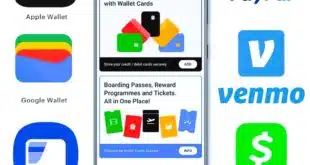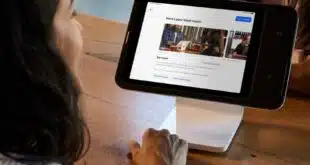The introduction of cardless ATMs, which rely on a financial institution’s mobile wallet instead of a debit card to make an ATM withdrawal, could help further the adoption of mobile wallets and mobile payments. That’s the assessment of Jerimy Saldivar at Peoples Bank, a Bellingham, Wash.-based financial institution with 24 branches. Peoples Bank began offering cardless ATM withdrawals in December.
“We believe that the mobile wallet will be the payment method in five to 10 years,” Saldivar, vice president of electronic banking, tells Digital Transactions News.
He will have company. BMO Harris Bank, the U.S. affiliate of BMO Financial Group (Bank of Montreal), launched cardless ATM withdrawals almost a year ago, and JPMorgan Chase & Co. and Bank of America Corp. recently announced plans to offer the service to their customers.
With both The Peoples Bank and BMO Harris systems, the customer logs in to her mobile-banking app to request a withdrawal amount. The application sends a token to the user’s device linking the user, her account number, and the requested transaction. Later, at one of her bank’s ATMs, the user pushes a “mobile” button on the ATM screen and, using the smart phone’s camera, scans a QR code displayed on the screen to identify herself and trigger cash dispensing via an encrypted connection to a cloud server.
By contrast, Bank of America intends to use near-field communication (NFC) technology for its service. “It will enable customers to leverage NFC technology on their smart phones to authenticate at a Bank of America ATM without needing their debit card,” a BofA spokeswoman says. Initially the service will be available to BofA employees at select ATMs in Silicon Valley, San Francisco, Charlotte, N.C., New York, and Boston, with a mid-year debut for customers, she says. In some instances, NFC cardless ATM transactions could be compatible with Apple Pay, Apple Inc.’s mobile-payment service, which uses NFC technology.
Saldivar says cardless ATM transactions, which his bank dubs Mobile Cash, “is a great way to introduce our customers to thinking of their smart phones as payments devices.” Providing Mobile Cash at its 30 ATMs required only software updates, Saldivar says. The bank also completed its EMV-acceptance upgrade at the same time.
To date, of the bank’s customers who have the app, about 3% have activated the Mobile Cash option, Saldivar says. The goal is to achieve 10% by year’s end. To get there, Peoples Bank is planning promotions and an education push. “We found the biggest struggle is explaining what it is and the benefit it offers,” Saldivar says. “You almost have to show it in person for people to understand the benefits.” Branch employees provide a walkthrough with customers at branch ATMs, he says.
Since its March debut, mobile cash access at BMO Harris, which makes the service available on 900 of its 1,300 ATMs, has been the focus of a concerted education campaign that starts with employees and relies on mass media to reach consumers. With a lot of outbound marketing, including messages within its mobile app, the coveted word-of-mouth messaging is building, says Doug Peacock, vice president and mobile banking lead. Anecdotally, some BMO Harris customers have asked others why they took a picture of the ATM when completing a cardless transaction, he says.
The benefit for consumers is a speedier ATM cash withdrawal. “It’s much faster than a normal card transaction,” Peacock tells Digital Transactions News. It takes about 15 seconds to complete a cardless ATM withdrawal compared with 60 to 90 seconds for a card-based one, regardless of whether it’s a chip or magnetic-stripe transaction, he says.
“The other real benefit is it brings the bank to the customer,” he says. Customers can use the BMO Harris app to check an account balance, transfer funds, and withdraw cash. A person-to-person payment feature is in development, too, Peacock says. “The phone becomes a remote control with the ATM,” he says.
The bank benefits from providing what it considers to be a safer ATM transaction. Without a physical connection between the phone and the ATM, the opportunity for a skimming device to intercept the transaction is gone, Peacock says. “The barcode is representing the time of day and what terminal the transaction is taking place at,” he says. “Everything else is tokenized. Nothing is passed in the clear.”
Saldivar echoes that perspective. Mobile Cash access is authenticated within the Peoples Bank app by a username and password, or a biometric, he says. A plastic card doesn’t have such capabilities beyond a four-digit PIN. “Is a $1.40 piece of plastic more secure than an $800 computer?” Saldivar asks.
Additionally, the bank’s app becomes more personalized for the customers. It’s not just about providing cardless ATM access, BMO’s Peacock says. With mobile deposit, marketing messages geared to consumer interests, and, soon, the ability to disable a card if it’s lost or stolen all provide peace of mind and control to the consumer, he says.
While the banks are enthusiastic about the prospects of wider cardless ATM use, experts warn consumer interest will be slow in coming. “Cardless ATM transactions are an interesting and appropriate evolution, but consumer adoption will most likely only be a fraction of Apple Pay’s adoption, which has been decisively sluggish,” warns Sam Ditzion, chief executive of Boston-based Tremont Capital Group.




